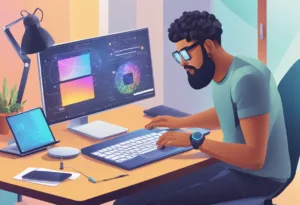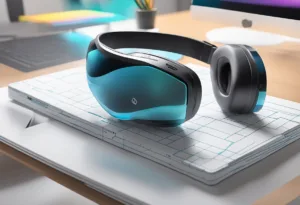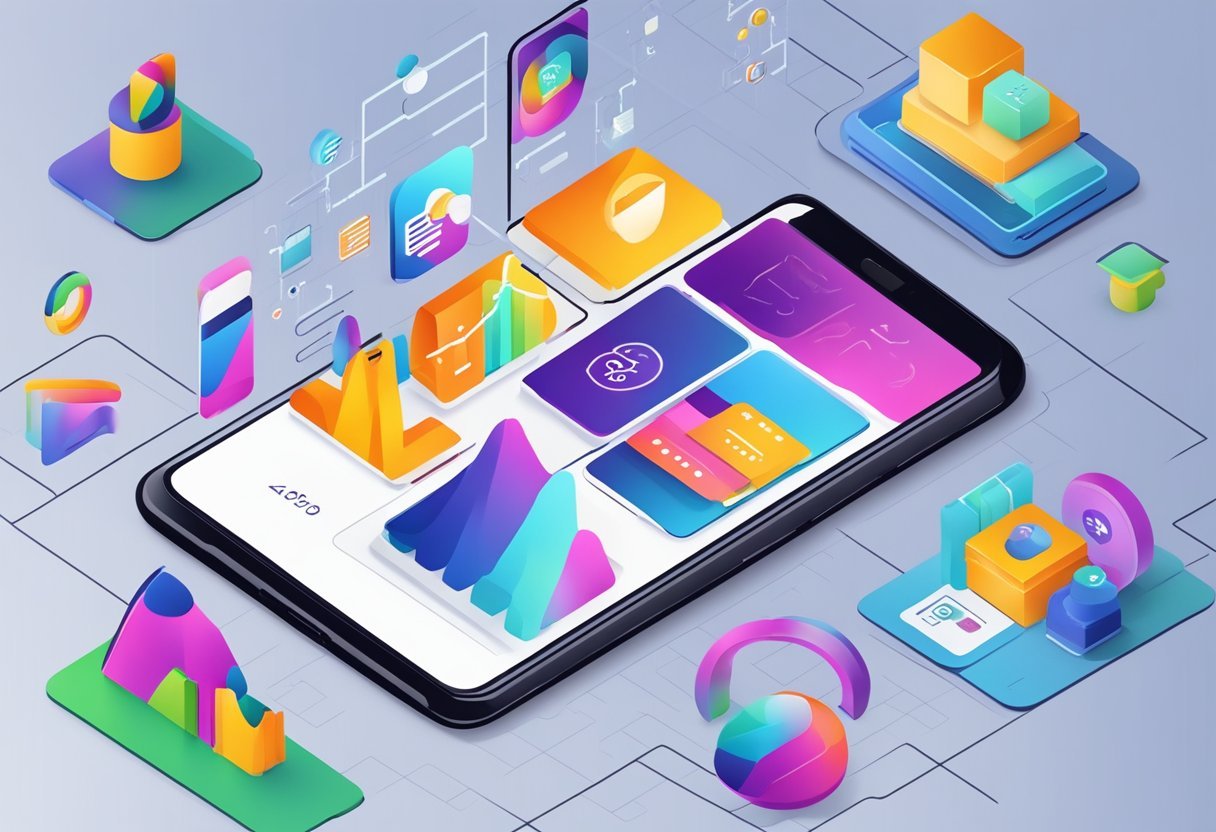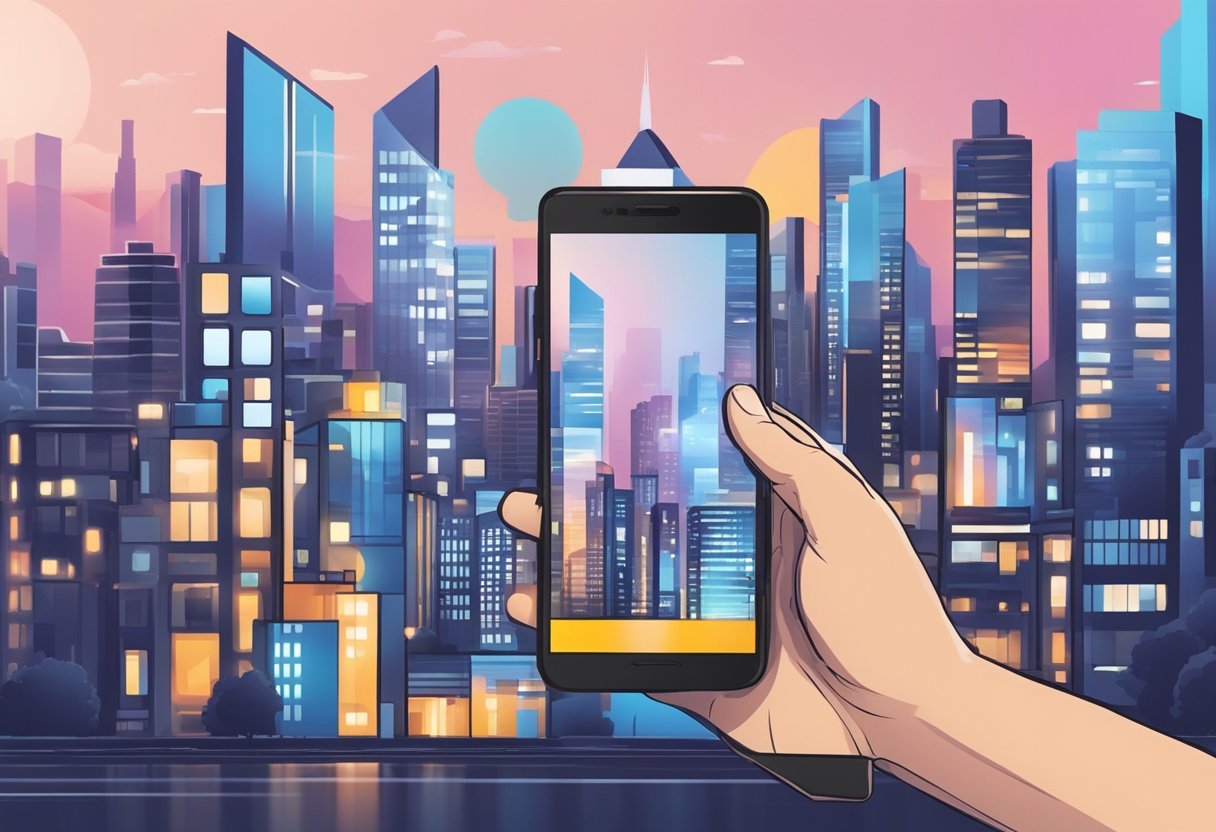Augmented reality (AR) is a technology that allows users to interact with a computer-generated environment that is overlaid on the real world. It is a rapidly growing field that is changing the way we interact with technology. AR technology is being used in a variety of industries, from entertainment to education, and its potential is only beginning to be realized. In this blog post, I wll share with you a step by step guide of how to code augmented reality, the skills required, progamming languages you need to know and the platforms to get started.
To develop AR applications, one must have knowledge of programming languages such as C#, JavaScript, or Python. Understanding AR development requires knowledge of both traditional software development and the unique challenges presented by AR. This includes designing AR experiences that are intuitive and user-friendly, implementing AR features such as object recognition and tracking, and selecting the appropriate platforms and tools for AR development.
Key Takeaways
- Augmented reality (AR) is a growing field that is changing the way we interact with technology.
- Developing AR applications requires knowledge of programming languages and understanding of traditional software development and unique AR challenges.
- Designing intuitive and user-friendly AR experiences, implementing AR features, and selecting the appropriate platforms and tools are key components of AR development.
The Basics of AR
Augmented Reality (AR) is a technology that allows virtual objects to be placed in the real world in real-time. AR is different from Virtual Reality (VR) in that it does not create a completely new environment. Instead, it enhances the existing environment with digital content. AR technology uses a camera to capture the real-world environment and then overlays digital content on top of it. It can be used on a variety of devices, including smartphones, tablets, and smart glasses.
AR technology can be used for a variety of purposes, including entertainment, education, and marketing. It can be used to create interactive games, educational tools, and marketing campaigns. AR technology can also be used in industries such as healthcare, where it can be used to visualize medical procedures and aid in surgical planning.
AR vs. VR: What’s the Difference?
AR and VR are often confused, but they are two different technologies. VR creates a completely new environment, while AR enhances the existing environment with digital content. VR is typically used for immersive experiences, such as gaming or training simulations. AR, on the other hand, is used for more practical applications, such as education or marketing.
AR technology is typically used in real-time applications, where the digital content is overlaid on the real-world environment in real-time. This allows users to interact with the digital content and the real-world environment simultaneously. AR technology can also be used to create 3D models and images, which can be used in a variety of applications.
AR technology is a powerful tool that can be used in a variety of industries. It allows virtual objects to be placed in the real world in real-time, enhancing the existing environment with digital content. AR technology is different from VR in that it does not create a completely new environment. Instead, it enhances the existing environment with digital content.
Coding in Augmented Reality

Skills needed to code augmented reality:
- 3D modeling: Understanding of 3D modeling to create or implement digital objects within an AR environment.
- Computer vision: Knowledge of computer vision to enable the app to accurately understand and interact with the real world.
- UI/UX design: Skills in user interface and user experience design to create intuitive and engaging AR apps.
- Spatial audio design: Ability to incorporate directional audio that interacts with the AR environment.
- Mathematics and physics: Strong grasp of math and physics to deal with spatial calculations and realistic animations.
5 AR coding languages:
- C#: Commonly used with Unity, a popular game development platform that also supports AR.
- Java: Used for building AR applications on Android platforms.
- Swift: Apple’s programming language for developing AR apps on iOS devices using ARKit.
- C++: Often used for more performance-intensive AR applications.
- JavaScript: With libraries like AR.js, it’s possible to create web-based AR experiences.
10 AR coding platforms:
- Unity: A widely-used game development platform with robust AR support.
- Unreal Engine: A powerful game engine that also allows for AR development.
- ARKit: Apple’s AR platform for iOS devices.
- ARCore: Google’s AR platform for Android devices.
- Vuforia: An AR SDK that supports both Android and iOS.
- Spark AR Studio: Facebook’s platform for creating AR experiences on Instagram and Facebook.
- Amazon Sumerian: A service to create and run VR, AR, and 3D applications.
- Wikitude: An AR platform that supports multiple development frameworks.
- Blender: An open-source 3D creation suite that can be used to create assets for AR.
- Maxst: An AR platform that provides an SDK for both 2D and 3D tracking.
How to code in augmented reality
To code augmented reality applications, you can follow these general steps:
- Define the AR experience: Determine what kind of AR app you want to create and what experience it should provide.
- Choose the platform and tools: Select the AR development platform and tools that best suit your project’s needs.
- Learn necessary programming languages: Gain proficiency in the programming languages required by the chosen platform.
- Set up the development environment: Install the necessary software development kits (SDKs) and integrated development environments (IDEs).
- Build the app’s user interface: Design and implement the user interface that users will interact with.
- Implement AR features: Use the chosen platform’s SDK to integrate AR capabilities such as image recognition, object tracking, and 3D rendering.
- Test the app: Continuously test the app on devices to ensure it functions correctly and provides the intended experience.
- Iterate based on feedback: Make adjustments and improvements based on user feedback and testing results.
- Deploy the app: Once satisfied with the app’s performance, deploy it to the appropriate app store or distribution platform.
Getting Started with AR Development

Choosing the Right AR SDK
Before starting AR development, it is important to choose the right AR SDK (Software Development Kit). There are several AR SDKs available, including ARCore, ARKit, and Vuforia. Each SDK has its own strengths and weaknesses, so it is important to choose the one that best suits the needs of the project.
ARCore is a popular AR SDK developed by Google, which supports both Android and iOS platforms. ARKit is another popular AR SDK developed by Apple, which supports iOS devices. Vuforia is a cross-platform AR SDK that supports both Android and iOS platforms. It is important to research and compare the features of each SDK before choosing the right one.
Setting Up the Development Environment
Once the AR SDK is chosen, the next step is to set up the development environment. This involves installing the necessary software and tools required for AR development. Unity is a popular game engine that supports AR development and is compatible with ARCore and ARKit. It provides a user-friendly interface and allows developers to create AR apps without extensive coding knowledge.
To set up the development environment, the developer needs to install Unity and the chosen AR SDK. Unity provides a step-by-step guide for installing the ARCore and ARKit plugins. The developer also needs to install the necessary software development kits (SDKs) and integrated development environments (IDEs) for the chosen platform.
Your First AR App
Once the development environment is set up, the developer can start creating their first AR app. This involves designing the user interface and creating the necessary 3D models and animations. Unity provides a range of tools and assets that can be used to create AR apps quickly and easily.
The developer needs to understand the basic concepts of AR, including image recognition, tracking, and rendering. They also need to understand the limitations of AR technology and design the app accordingly. Testing and debugging are important aspects of AR development, and the developer needs to ensure that the app works correctly on different devices and in different environments.
AR development requires a combination of technical knowledge and creativity. Choosing the right AR SDK, setting up the development environment, and creating the first AR app are important steps in the process. With the right tools and resources, anyone can create engaging and innovative AR experiences.
Designing AR Experiences

Augmented Reality (AR) is a rapidly growing technology that offers unique and interactive experiences to users. Designing AR experiences requires a different approach than traditional design, as it involves creating content that can interact with the real world. This section will cover the design principles for AR and creating interactive and immersive AR content.
Design Principles for AR
Designing AR experiences requires a deep understanding of visual design and 3D models. It is essential to create content that is unique and can provide an immersive experience to the user. The following design principles can help create an effective AR experience:
- Simplicity: Keep the design simple and easy to understand. Avoid cluttering the screen with too much information.
- Consistency: Maintain consistency in the design throughout the AR experience. Consistent design elements can help the user understand the interaction better.
- Usability: Design for usability. The AR experience should be easy to navigate and use.
- Context: Consider the context in which the AR experience will be used. Design the experience to fit the context and environment.
Creating Interactive and Immersive AR Content
Creating interactive and immersive AR content requires a deep understanding of the technology and the user’s expectations. The following techniques can help create an interactive and immersive AR experience:
- Interactivity: Design the AR experience to be interactive. Allow the user to interact with the content and manipulate it.
- Immersive: Make the AR experience immersive by using 3D models and visual effects. Create an experience that feels real and can transport the user to another world.
- Unique: Create a unique AR experience that stands out from the rest. Use creativity and innovation to create an AR experience that is memorable and engaging.
Designing AR experiences requires a different approach than traditional design. It involves creating content that can interact with the real world and provide an immersive experience to the user. By following the design principles and creating interactive and immersive AR content, one can create an effective AR experience that stands out from the rest.
Implementing AR Features

Augmented Reality (AR) is an exciting technology that can be used to create immersive experiences for users. To implement AR features, developers need to consider several factors, such as marker-based vs. markerless tracking, utilizing surface detection and plane recognition, and integrating 3D objects in AR.
Marker-Based vs. Markerless Tracking
AR applications can use either marker-based or markerless tracking. Marker-based tracking uses a physical marker or image target to anchor virtual objects in the real world. Markerless tracking, on the other hand, uses computer vision algorithms to track the user’s surroundings without the need for a physical marker.
While markerless tracking can provide more freedom for users to move around, it can be more challenging to implement and may not be as accurate as marker-based tracking. Marker-based tracking is generally more precise and easier to implement, but it requires the user to have the physical marker or image target in view.
Utilizing Surface Detection and Plane Recognition
Surface detection and plane recognition are essential features for AR applications. Surface detection allows AR applications to detect and recognize flat surfaces, such as tables, floors, and walls, to anchor virtual objects. Plane recognition helps AR applications to understand the geometry of the real world and create virtual objects that interact with the physical environment.
Developers can use various technologies to implement surface detection and plane recognition, such as Apple’s ARKit, Google’s ARCore, or Unity’s AR Foundation. These technologies provide developers with APIs and tools to detect surfaces and recognize planes, making it easier to create AR applications.
Integrating 3D Objects in AR
Integrating 3D objects in AR is a crucial aspect of creating immersive experiences for users. AR applications can use 3D models to create virtual objects that interact with the real world. Developers can use various tools and software to create 3D models, such as Blender, Maya, or SketchUp.
Once developers have created 3D models, they can import them into AR applications using technologies such as Unity or Unreal Engine. These technologies provide developers with tools to import 3D models, apply textures and materials, and create animations and interactions.
Implementing AR features requires developers to consider several factors, such as marker-based vs. markerless tracking, utilizing surface detection and plane recognition, and integrating 3D objects in AR. By using the right technologies and tools, developers can create immersive AR experiences that engage users and provide them with unique and exciting experiences.
Platforms and Tools for AR Development
Augmented Reality (AR) is the technology that overlays digital information on top of the real world. It’s a rapidly growing field that has the potential to revolutionize the way we interact with the world around us. There are several platforms and tools available to develop AR applications.
Developing AR Apps for Android and iOS
Developing AR apps for Android and iOS is a popular choice. Both platforms have their own AR development kits, ARCore for Android and ARKit for iOS. These kits provide developers with the tools they need to create AR experiences that are optimized for their respective platforms.
ARCore is a platform developed by Google for building AR applications on Android devices. It uses motion tracking, environmental understanding, and light estimation to create immersive AR experiences. ARKit is Apple’s AR platform for iOS devices. It provides developers with tools to create AR experiences that integrate with the device’s camera, motion sensors, and other hardware.
Cross-Platform AR Development
Cross-platform AR development allows developers to create AR applications that work across multiple platforms. This approach can save time and resources, as developers can create a single codebase that can be used across multiple platforms.
One popular cross-platform AR development tool is Unity. Unity is a game engine that can be used to create AR experiences for Android, iOS, macOS, Windows, and other platforms. It provides developers with a range of tools for creating 3D models, animations, and other assets that can be used in AR applications.
Web-Based AR with WebXR and AR.js
Web-based AR allows developers to create AR experiences that can be accessed through a web browser. This approach can make AR applications more accessible, as users don’t need to download a separate app to access them.
WebXR is a web standard that provides developers with the tools they need to create immersive AR experiences that work across multiple devices. One popular library for developing WebXR-based AR applications is A-Frame. A-Frame is a web framework that allows developers to create VR and AR experiences using HTML, CSS, and JavaScript.
AR.js is another popular library for creating web-based AR experiences. It’s a lightweight library that uses JavaScript and WebGL to create AR experiences that can be accessed through a web browser. AR.js provides developers with a range of tools for creating 3D models, animations, and other assets that can be used in AR applications.
There are several platforms and tools available for AR development. Developers can choose the platform and tools that best suit their needs, depending on the target audience and the type of AR experience they want to create.
Frequently Asked Questions

What are the best programming languages for developing augmented reality applications?
When it comes to developing augmented reality applications, there are several programming languages to choose from. Some of the most popular languages include C#, C++, Java, and Swift. Each language has its own unique set of features and benefits. C# and C++ are commonly used for developing AR applications for Windows-based devices, while Java is popular for developing AR apps for Android devices. Swift is the language of choice for developing AR apps for iOS devices.
Which software tools are recommended for beginners to create AR content?
For beginners, there are several software tools available to create AR content. Some of the most popular tools include Unity, Vuforia, ARToolKit, and Wikitude. These tools provide an easy-to-use interface for creating AR content without requiring extensive programming knowledge. Unity is particularly popular among beginners due to its user-friendly interface and extensive documentation.
How can I develop an augmented reality app on Android?
To develop an augmented reality app on Android, developers can use the Android Studio IDE and Java programming language. Android Studio provides a robust development environment for creating AR apps, and Java is the language of choice for developing Android apps. There are several AR development frameworks available for Android, including Vuforia, ARToolKit, and Wikitude.
What steps are involved in creating an AR app for iOS devices?
To create an AR app for iOS devices, developers can use the Xcode IDE and Swift programming language. Xcode provides a powerful development environment for creating AR apps, and Swift is the language of choice for developing iOS apps. There are several AR development frameworks available for iOS, including ARKit and Vuforia.
Can you provide some examples of simple AR projects for learning purposes?
Some examples of simple AR projects for learning purposes include creating a virtual pet, building a virtual art gallery, or developing a simple AR game. These projects can be developed using popular AR development tools such as Unity and Vuforia.
Is there a way to create AR experiences using Python?
Yes, there are several Python libraries available for creating AR experiences, including OpenCV and Pygame. While Python is not the most popular language for developing AR applications, it can be used to create simple AR projects and prototypes. However, it is important to note that Python may not be the best choice for developing complex AR applications due to its relative lack of support for AR-specific features.




